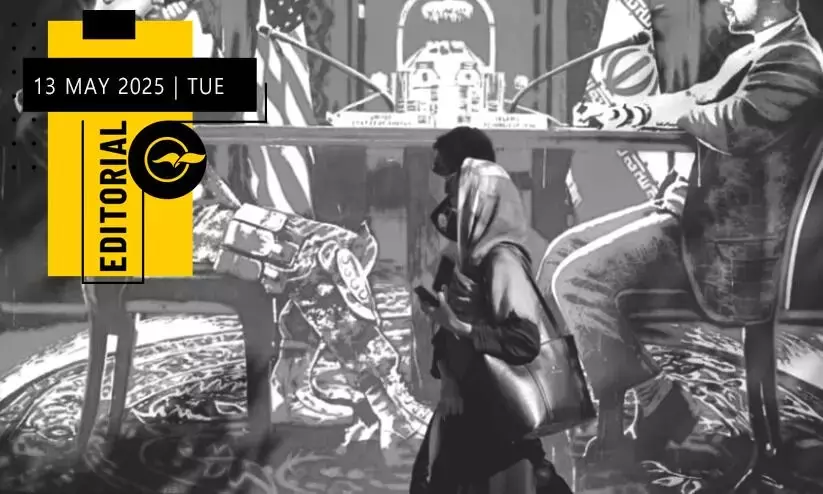
Hopes rise amid Iran-US talks
text_fieldsThe nuclear disarmament talks between Iran and the United States, mediated by Oman, have completed their fourth round, with both sides expressing greater hope and confidence. This is seen as a sign of easing tensions between the two countries. In Muscat on Sunday, Iran's Foreign Minister Abbas Araghchi and U.S. President Donald Trump's special envoy to the Middle East, Steve Biegun, described the talks as difficult but beneficial. While Iran called the discussions ‘productive’, the U.S. stated that clearer agreements on a way forward were emerging. According to an Iranian Foreign Ministry spokesperson, the conversation helped both sides understand each other’s positions and explore rational and objective solutions to their differences. The fifth round of talks will take place at Oman’s discretion. The nuclear deal with Iran, signed under Barack Obama’s administration, was annulled by President Trump upon taking office, and the U.S. has since moved forward with sanctions. Trump’s position is that Iran should fully comply with nuclear disarmament and shift towards importing uranium for enrichment. Delays in resolving uncertainties regarding the U.S. involvement in the talks led to the postponement of the discussions, initially scheduled for early May, to Sunday. Both sides expressed hope at the end of the talks, and observers are watching closely to see whether this signals a thaw in relations.
Iran maintains that it has a legal right to enrich uranium for civilian purposes and will not accept any agreement that violates this right. This position was made clear by the Foreign Minister before the talks. Iran claims significant achievements in this area, gained at the cost of many nuclear scientists’ lives. As a result, Iran is not prepared to relinquish these gains. The 2015 nuclear deal had provided legitimacy to this stance. At the same time, Iran has assured that it will not backtrack on its ban on nuclear bomb development. However, U.S. envoy Steve Biegun reiterated that the goal is to completely freeze Iran’s nuclear programme. The U.S. insists that Iran abandon nuclear facilities at Natanz, Fordow, and Isfahan. U.S. Secretary of State Marco Rubio believes Iran should only export uranium that has been enriched beyond its borders. Iran currently enriches uranium to 60%. Once this reaches 90%, it will approach weapons-grade level. However, the International Atomic Energy Agency confirms that Iran has no plans for weapon production.
Trump does not heed the assurances given by Iran or the International Atomic Energy Agency. During his second term, one of the first orders he signed was to apply ‘maximum pressure’ to counter what he called Iran’s nuclear weapons threat. Trump stated that it was with great difficulty that he arrived at such a decision, yet he also remarked that he views Iran as a great country that does not manufacture nuclear weapons. However, the rhetoric Trump used against Tehran was taken even further by ‘ultra-nationalists’, who acted more aggressively than he did. One such overstep resulted in the removal of National Security Adviser Mike Watts, who was accused of unilaterally planning, along with Israeli Prime Minister Netanyahu, a strike against Iran. Partly because the U.S. was not ready for an immediate military move, Trump showed interest in talks mediated by Oman. Still, the global powers are considering all possible ways to pressure Iran. Chief among them is the effort to completely halt Iran’s oil exports. Despite the sanctions, Iran continues to supply oil to certain countries, including China. To stop that as well, the U.S. blacklisted a Chinese chemical group and three port terminal operators, issuing a stern warning. While such efforts to corner and pressure Iran continue in various ways, the fact that both sides are expressing hope in the ongoing bilateral talks can be considered a positive sign.







